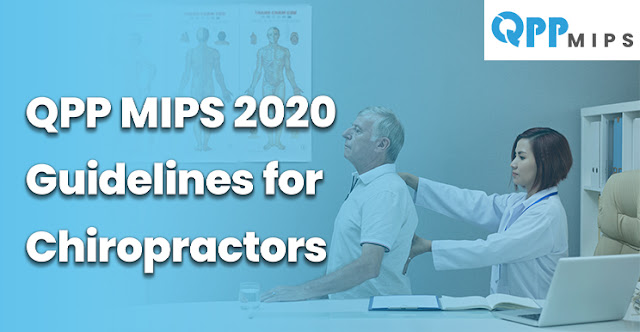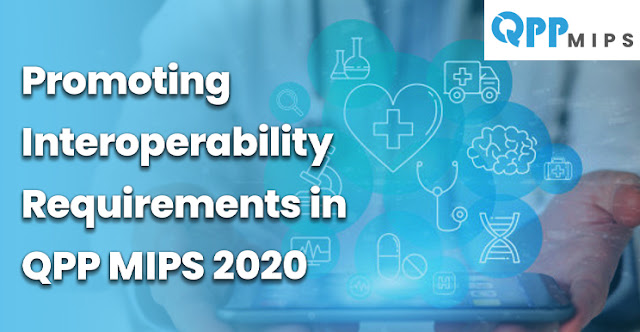
Coronavirus has struck all, but the healthcare industry is under its wrath the most. With double the power, physicians, medical billing outsourcing companies, and
MIPS Qualified Registries are working together to undermine the effect.
MIPS 2019 performance year is behind our back, and now it’s time for 2020. Although given circumstances are tough, the planning for MIPS 2020 will get fruitful results in terms of revenue.
Physicians! Bear in mind that with each performance year, requirements change.
• Payment adjustment will be 9% in 2020.
• 45 MIPS points are required to stay penalty-free.
• An exceptional performance bonus will be awarded at 85 points.
The reporting burden is great, but, we can’t afford to stay idle. You are busy dealing with COVID cases and risking your life. We suggest don’t risk your future revenue with the current situation.
Here is a guide to get you through the MIPS 2020 details. MIPS reporting services can take notes and get started.
Check Your Eligibility Status. Review if you’re required to Report Data?
CMS has updated the eligibility tool. Now, physicians or MIPS Qualified Registries can check on their behalf that if they can report data or they will have to opt-in.
Even ineligible clinicians can voluntarily participate in MIPS.
Enter your NPI – National Provider Identification number into the tool to get updates about:
• The eligibility status
• Qualifying Alternative Payment Model (APM, (QP) or a Partial QP participation status
• If the physician is required to opt-in
• The special status designation, For Instance, Small Practice, Ambulatory Surgery Center (ASC)-based, Hospital-based, etc.
If a physician has switched places, checking the latest eligibility status is necessary.
Which Reporting Option to Choose: Individual or Group Participation?
Physicians can report data either individually or in a group. If chosen to report via a group, two or more clinicians can report via the same Tax Identification Number (TIN). All the participants of the group will get the same points in the end.
Neurology Billing Services
Group participation, of course, has some advantages. For Instance, Resources and time can be saved as it allows physicians a single MIPS submission on behalf of everybody.
• Group participants only have to report data for a similar set of patients.
• With more physicians on board, there are more chances to accurately submit data.
• However, there is a condition that at least 50% of participants should work upon the same activity for ninety days in order to report for Improvement Activities (IA).
Design Your Reporting Goals
Either you are submitting data via MIPS Qualified Registry or any other MIPS submission method, it's important to set goals beforehand. It gives time to analyze, and reflect the collected data for maximum revenue.
The Merit-based Incentive Payment System (MIPS) is a crucial component of the Quality Payment Program (QPP) established under the Medicare Access and CHIP Reauthorization Act (MACRA). It is designed to streamline the process of evaluating healthcare providers based on the quality of care they deliver. If you’re looking to improve your practice’s performance under MIPS 2020, leveraging consulting services can significantly enhance your strategy. In this article, we’ll explore how to effectively plan and implement MIPS 2020 consulting services.
Understanding MIPS 2020
What is MIPS?
MIPS combines several different Medicare quality programs into a single framework to assess providers based on four key performance categories:
- Quality
- Improvement Activities
- Promoting Interoperability
- Cost
Each category contributes to a provider’s overall MIPS score, affecting their Medicare reimbursement rates.
Importance of MIPS 2020
With increasing pressure on healthcare providers to deliver high-quality care while managing costs, MIPS 2020 serves as a framework for achieving these goals. Failing to meet the MIPS requirements can result in financial penalties, making it essential for providers to plan accordingly.
Why Consider MIPS Consulting Services?
Expertise and Guidance
MIPS consulting services offer specialized knowledge and support, helping practices navigate the complexities of the MIPS framework. Consultants can provide insights on:
- Understanding MIPS requirements
- Identifying performance improvement opportunities
- Developing effective reporting strategies
Customized Strategies
Every healthcare practice is unique, and MIPS consultants can tailor strategies to fit specific needs. They can assist in:
- Choosing the right quality measures
- Implementing improvement activities
- Optimizing performance in the promoting interoperability category
Maximizing Reimbursement
Consultants can help practices maximize their MIPS scores, ensuring they receive the best possible reimbursement rates from Medicare. This includes:
- Identifying areas for improvement
- Tracking performance metrics
- Implementing best practices for reporting
Steps to Start Planning for MIPS 2020 Consulting Services
1. Assess Current Performance
Before engaging with a consultant, assess your current MIPS performance. Review past reports and identify areas where your practice fell short. Understanding your baseline will help consultants create a targeted plan for improvement. General Surgery Billing Services
2. Set Clear Goals
Establish specific goals for your MIPS performance. Consider what you want to achieve, such as improving your Quality score or enhancing your Promoting Interoperability performance. Clear goals will guide your consulting efforts.
3. Research Consulting Services
Look for reputable MIPS consulting services that have a proven track record of helping practices succeed under the MIPS program. Consider factors such as:
- Experience with similar practices
- Client testimonials and case studies
- Services offered
4. Evaluate Service Offerings
Different consulting services offer various levels of support. Evaluate their offerings to find a service that aligns with your practice’s needs, whether it’s full-service consulting or targeted support in specific areas.
5. Create a Timeline
Develop a timeline for implementing consulting services. Include milestones for assessing current performance, engaging with consultants, and tracking progress throughout the year. A well-defined timeline ensures accountability and helps keep your team focused.
6. Collaborate with Your Team
Involve your practice’s staff in the planning process. Effective MIPS implementation requires teamwork and buy-in from all members. Schedule meetings to discuss goals, gather input, and foster a culture of continuous improvement.
7. Monitor Progress
Once you begin working with a consulting service, regularly monitor progress toward your MIPS goals. Set up periodic check-ins to assess performance, adjust strategies, and celebrate successes along the way.
A Little Overview of MIPS Quality Measures
Quality
This category has a total of 45 points.
• Report 6 Quality measures, with at least 1 measure Outcome measure or a High Priority measure
• Reported data should comply with data completeness constraint, otherwise, the physician will receive 0 points. Small medical practices can earn 3 points for this.
• To score high, report each measure for 70% of the eligible patients.
Promoting Interoperability (PI)
This category has a total of 25 points.
• Data should be reported for 90 consecutive days.
• The use of a 2015 certified Electronic Health Record (EHR) is required.
• For extreme and uncontrollable situations, CMS weighs this category to 0 and credits in the quality category.
Improvement Activities (IA)
This category has a total of 15 points.
• Total data for 90 days is required.
• Groups with 16 or more clinicians: Attest to 2 high-weighted IAs or 1 high-weighted and 2 medium-weighted IAs or 4 medium-weighted IA measures
• Individual clinicians and groups with 15 or fewer clinicians: Attest to 1 high-weighted IA or 2 medium-weighted IA measures
Cost
This category has a total of 15 points.
There is no need to submit data for this category. CMS will itself calculate the performance based on the Medicare claim data.
Instructions for Small Medical Practices
• Report 6 Quality measures on 1 eligible patient each with at least 1 measure should be an Outcome or High Priority measure
• Submit 1 High-weighted or 2 Medium-weighted Improvement Activities
QPP MIPS is a MIPS Qualified Registry ready to implement tried and tested strategies to increase physicians' score in MIPS performance. Whether you need assistance in submitting data to CMS or a full-proof plan to stay penalty-free, we got you covered in every need.
Conclusion
Leveraging MIPS 2020 consulting services can significantly enhance your healthcare practice's ability to succeed under the Quality Payment Program. By assessing your current performance, setting clear goals, and collaborating with a reputable consulting firm, you can maximize your MIPS score and improve reimbursement rates. The time to start planning is now—ensure your practice is well-prepared for the challenges and opportunities presented by MIPS 2020.
FAQs
What is the Merit-based Incentive Payment System (MIPS)?
MIPS is a program that evaluates healthcare providers based on quality, improvement activities, promoting interoperability, and cost, affecting their Medicare reimbursement rates.
Why is MIPS consulting important?
Consulting services provide expertise, customized strategies, and guidance to help practices improve their MIPS performance and maximize reimbursement.
How do I assess my current MIPS performance?
Review past performance reports, identify areas of weakness, and gather feedback from your team to understand your baseline performance.
What should I look for in a MIPS consulting service?
Consider their experience, client testimonials, and the specific services they offer to find the best fit for your practice's needs.
How often should I monitor my MIPS progress?
Regularly monitor progress through periodic check-ins, ensuring your practice stays on track to meet its MIPS goals.
Labels: medical billing outsourcing companies, MIPS 2020, MIPS Qualified Registries, MIPS Quality Measures, MIPS submission method, QPP MIPS

 As of now, the reporting requirements for QPP MIPS 2019 and MIPS 2020 realign for clinicians during the pandemic.
As of now, the reporting requirements for QPP MIPS 2019 and MIPS 2020 realign for clinicians during the pandemic. 













